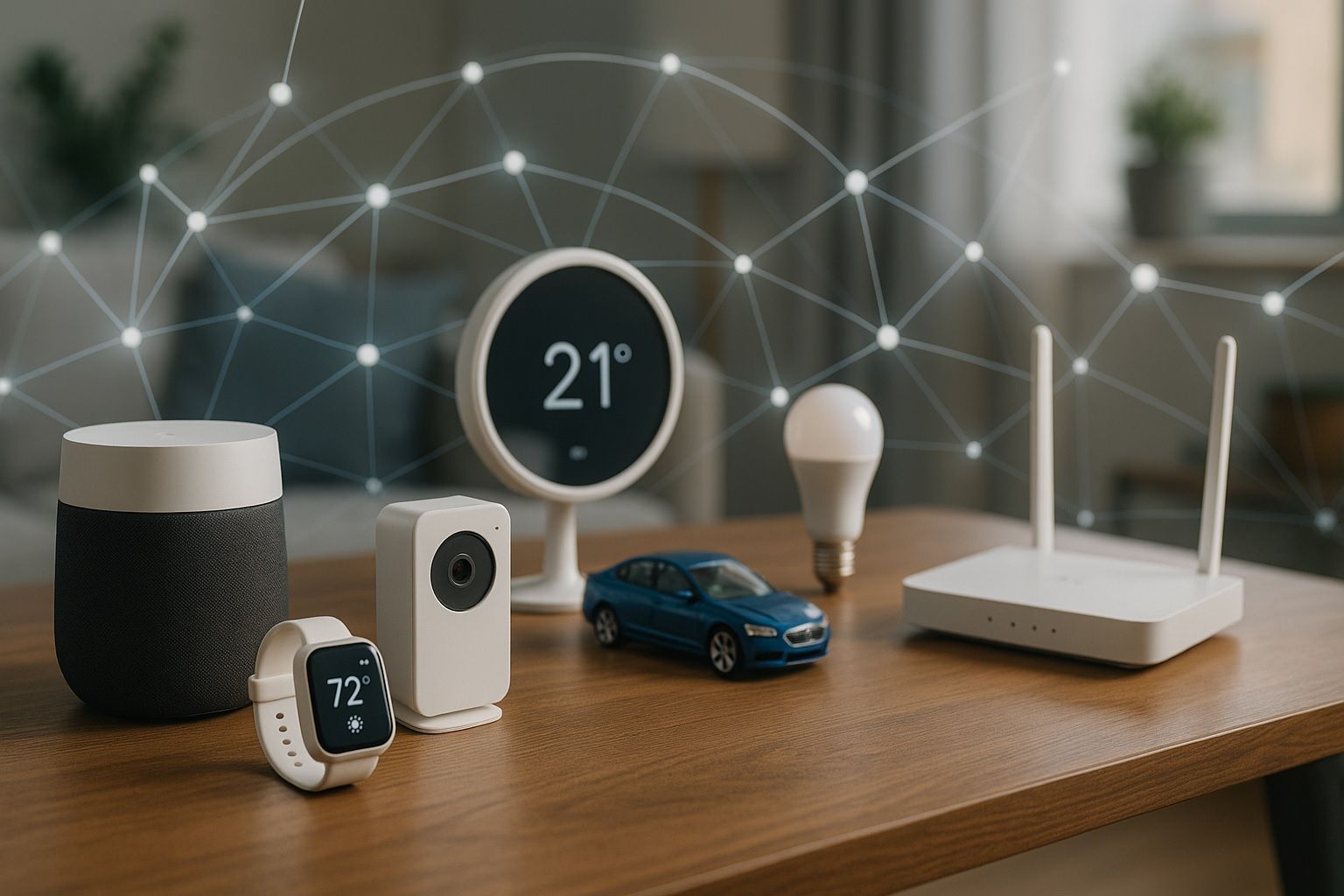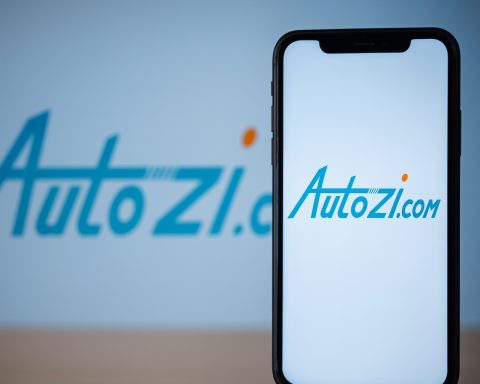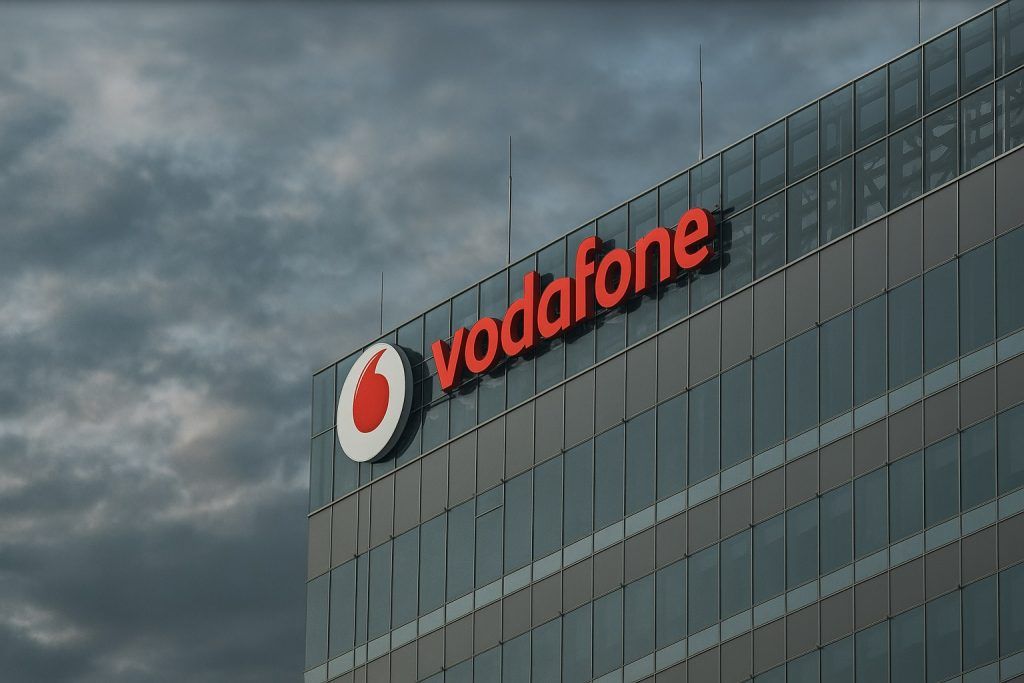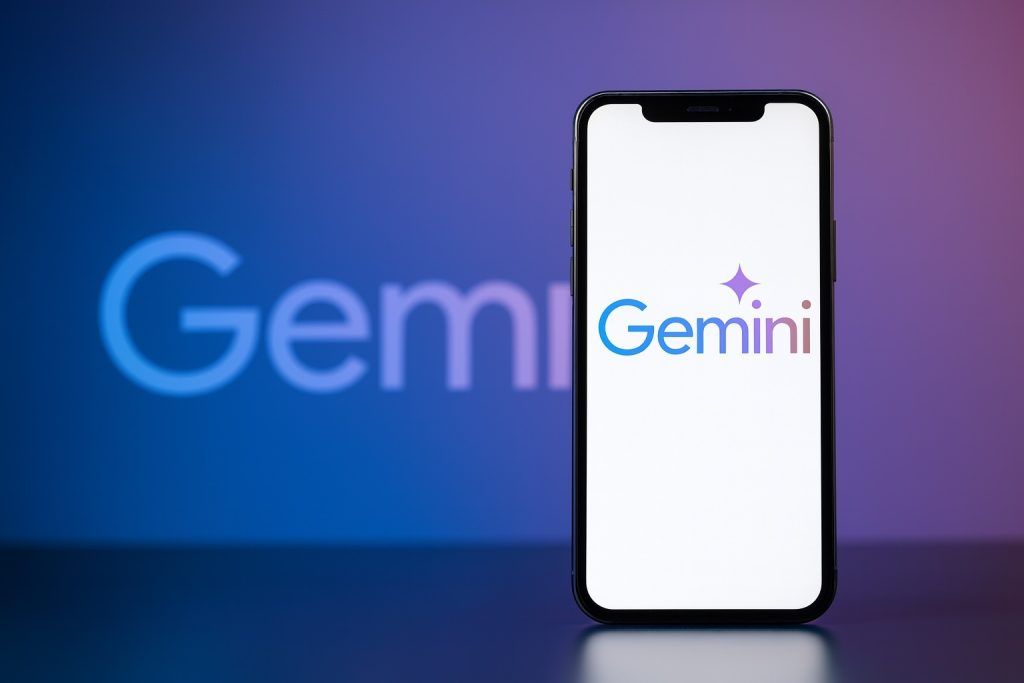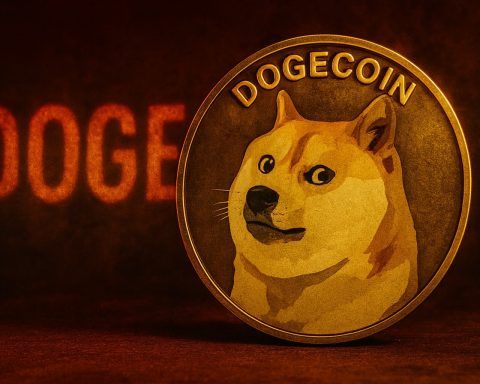The Internet of Things (IoT) is touching everything today from home heating and smart meters to industrial robots and farm irrigation. November 19, 2025 has brought a particularly dense cluster of headlines across security, energy, edge AI, and market research. Here’s a detailed rundown of the most important IoT stories you need to know today.
1. IoT Security Shock: “Operation WrtHug” Hijacks Tens of Thousands of ASUS Routers
A major new IoT-focused cyber‑espionage campaign is unfolding — and this time, it’s targeting consumer and small-office routers.
SecurityScorecard’s STRIKE team, working with ASUS, has revealed “Operation WrtHug”, a large‑scale hijacking of end‑of‑life ASUS home and SOHO routers. Around 50,000 routers have been compromised worldwide, with infection clusters heavily concentrated in Taiwan and Southeast Asia and no observed activity in mainland China. [1]
Key details:
- Targets: Older ASUS WRT models such as RT‑AC1300UHP, GT‑AX11000 and DSL‑AC68U that no longer receive vendor patches, making them attractive long‑term footholds. [2]
- Exploits: Attackers are chaining multiple known vulnerabilities, including CVE‑2023‑39780, previously linked to other ASUS router campaigns. [3]
- TTPs: A distinctive 100‑year self‑signed TLS certificate is being used across compromised devices — a highly unusual fingerprint suggesting sophisticated, coordinated operators. [4]
- Attribution: Researchers say the tradecraft and targeting are consistent with China‑linked nation‑state actors, though formal attribution remains cautious. [5]
Why it matters for IoT:
- Consumer and SOHO routers are increasingly treated as critical IoT infrastructure, not just “dumb” gateways.
- The campaign shows how unpatched, low‑priority devices on the edge of networks can become stealthy relay nodes in long‑term espionage operations.
Practical takeaways for IoT deployments
- Retire EoL gear: Replace end‑of‑life routers and gateways that no longer receive security updates.
- Patch aggressively: Keep firmware and management interfaces fully updated.
- Lock down access: Disable remote administration where possible, change default credentials, and use strong, unique passwords.
- Segment networks: Isolate IoT devices and routers from core business systems to limit blast radius if compromised.
This story is likely to keep driving regulatory and enterprise attention toward minimum‑security baselines for consumer‑grade IoT and networking gear.
2. Smart Grids & Utilities: Quectel Pushes Second‑Generation Smart Meters
At the Enlit 2025 energy conference in Bilbao, Quectel Wireless Solutions is showcasing a deep portfolio of IoT modules and antennas aimed at what’s effectively Smart Meters 2.0. [6]
Highlights from the announcement:
- Massive installed base: Smart electricity, water and gas meters already exceeded 1.06 billion devices by the end of 2023, and deployments are still rising globally. [7]
- Shift to next‑gen meters: Many mature markets are now replacing first‑generation AMI meters with more capable second‑generation devices that support:
- Two‑way communications
- Real‑time consumption insights
- Support for rooftop solar and prosumers
- Richer demand‑response programs [8]
- Radio tech stack:
- NB‑IoT and LTE‑M via Quectel’s BG95 and BG950S‑GL modules
- LTE Cat 1 / Cat 1 bis via EG800 and EC200 series
- Wi‑SUN, Wireless M‑Bus / sub‑GHz proprietary, and LoRa modules for dense mesh or long‑range deployments [9]
Research from Berg Insight cited in the release suggests the installed base of water AMI endpoints in Europe and North America is set to double between 2024 and 2030, and European gas smart meter penetration has already reached around 45%. [10]
Why this matters
- Smart meters are quickly becoming multi‑service IoT platforms — not just for billing, but for grid balancing, leak detection, power quality analytics, and dynamic tariffs.
- Utilities are leaning on low‑power cellular and sub‑GHz mesh technologies to cover difficult geographies while preserving battery life for over a decade.
3. Smart Home & Energy: Aqara Launches Matter‑Ready Radiator Thermostat W600
In the smart home space, Aqara has announced general availability of the Radiator Thermostat W600, a Matter‑compatible thermostatic radiator valve (TRV) targeting European homes. [11]
Key features:
- Dual‑protocol connectivity: Thread (with native Matter support) and Zigbee, giving users flexibility between a hub‑less Matter setup or deeper automation via an Aqara hub. [12]
- Room‑level zoning: Up to seven programmable time periods per day per room, to avoid heating unused spaces and align heating with daily routines. [13]
- Context‑aware control:
- Works with occupancy and presence sensors for demand‑based heating.
- Integrates with contact sensors to cut heating when windows are opened.
- Supports geofencing so heating can ramp up as users head home. [14]
- Matter ecosystem support: The W600 can integrate with major smart home platforms including Alexa, Apple Home, Google Home, Home Assistant, Homey and SmartThings. [15]
With energy prices still volatile in much of Europe, the W600 reflects a broader trend: smart heating as one of the fastest‑growing residential IoT categories, especially as Matter makes multi‑vendor setups less painful.
4. Edge & Industrial IoT: New Hardware for AI at the Edge
Neousys edge AI platforms for robotics and automation
Neousys Technology has detailed new rugged AI computing platforms for robots and industrial automation ahead of the iREX 2025 robotics show in Tokyo. [16]
The lineup includes:
- NVIDIA Jetson‑based edge systems delivering up to 275 TOPS for on‑device vision and autonomy, in compact, fanless enclosures built for mobile robots. [17]
- Nuvo‑11531: An Intel Core Ultra Series 2‑based system combining CPU, NPU and GPU on 3 nm silicon for up to 36 TOPS of AI performance in factory and logistics environments. [18]
- POC‑900: An ultra‑compact AMD Ryzen PRO 8640U system delivering 31 TOPS in a small footprint, designed to operate across ‑25°C to 70°C in harsh field conditions. [19]
These systems underscore how industrial PCs are becoming AI appliances, designed for continuous inference on production lines and autonomous equipment rather than running generic workloads in a rack.
Decenta’s Intel‑powered AI edge tower
On the enterprise and industrial edge, Decenta has introduced the S25‑ARLS‑WA02, an Intel Core Ultra–based “tower‑rack convertible” system optimized for edge AI workloads. [20]
According to coverage from Embedded Computing Design:
- The system uses Intel’s Q870 chipset and supports Intel Core Ultra processors alongside AI accelerator cards delivering up to 394 TOPS (INT8) for inference. [21]
- Designed for applications like healthcare, traffic analytics, education and video conferencing, it balances high AI performance with edge‑friendly power budgets. [22]
Together, these launches highlight how edge compute in IoT is shifting from simple gateways to AI‑first platforms, with TOPS per watt and ruggedization becoming key differentiators.
5. Business & Market Moves in IoT
Nanoprecise: Fast‑growth recognition for AI‑driven maintenance IoT
Canadian company Nanoprecise Sci Corp has been ranked 151st on Deloitte’s Technology Fast 500 list for North America, posting 539% revenue growth over the evaluation period. [23]
Nanoprecise develops IoT sensor‑based predictive maintenance solutions for machinery‑heavy industries, combining:
- Multi‑sensor condition monitoring
- AI‑driven diagnostics
- An “Energy‑Centered Maintenance” methodology that links equipment health to energy efficiency. [24]
The ranking is another signal that industrial IoT plus AI for maintenance and energy optimization is maturing into a solid business segment, not just a pilot‑project buzzword.
Sequans: IoT chipmaker pairs buybacks with a Bitcoin treasury strategy
French fabless semiconductor company Sequans Communications, a long‑time provider of 4G/5G cellular IoT chipsets, has updated investors on its ADS repurchase program. [25]
Key points:
- Sequans has repurchased 755,349 ADSs, roughly 5% of outstanding shares and half of its current buyback authorization, at an average price of $6.40. [26]
- The company claims this has generated a 4.4% increase in Bitcoin per outstanding ADS, reflecting its unusual strategy of holding Bitcoin as a primary treasury asset. [27]
- Management says the buybacks support both its Bitcoin treasury and its core IoT semiconductor business, which spans LTE‑M/NB‑IoT, Cat 1 bis and emerging 5G RedCap platforms. [28]
It’s a rare example of a pure‑play IoT chip vendor pairing capital return with a crypto‑heavy treasury thesis, and it will be closely watched by both equity and digital‑asset analysts.
Xiaomi: “Human × Car × Home” strategy lifts revenue
Xiaomi has reported unaudited Q3 2025 results, with total revenue reaching $15.83 billion, up 22.3% year‑on‑year and marking its fourth consecutive quarter above $14 billion. [29]
While smartphones and EVs dominate the top line, the company also underscored its “Human × Car × Home” strategy, which tightly integrates:
- Smartphones
- Smart EVs (with quarterly EV revenue hitting about $4.06 billion)
- Smart home and IoT ecosystem devices running Xiaomi’s HyperOS. [30]
The company continues to expand its smart home offering, including new IoT solutions and an open‑source voice model to unify control across devices, strengthening Xiaomi’s position as a major consumer IoT platform vendor. [31]
IoT services and on‑device AI markets forecast strong growth
Two new market research releases today reveal how the business side of IoT is evolving:
- IoT development services: A report from QY Research pegs the global IoT development services market at US$626 million in 2024, with forecasts of US$2.123 billion by 2031 — a CAGR of 18.9% from 2025–2031. [32]
- On‑device AI for IoT: IoT analyst firm Berg Insight estimates the on‑device AI market at US$10.1 billion in 2024, excluding smartphones, tablets and PCs, and projects it to grow to US$30.6 billion by 2029 (about 25% CAGR). [33]
These numbers reinforce a clear trend: organizations are spending heavily not just on hardware, but on specialized development and AI tooling to make IoT deployments smarter, more autonomous and less cloud‑dependent.
6. Agriculture & Sustainability: Smart Drip Irrigation Powered by IoT
On the sustainability front, a new review article highlighted today by Bioengineer.org examines the rise of IoT‑driven smart drip irrigation systems. [34]
The review by Jaiswal, Kumar and Shukla (published in Discov Agric) looks at:
- Sensor‑rich irrigation architectures: Soil moisture, climate and crop‑level sensors feeding real‑time data into controllers at the edge. [35]
- Machine learning for water optimization: Models that learn from historical irrigation outcomes to predict optimal timing and volume, reducing water waste while improving yield. [36]
- Edge computing in the field: Local processing to avoid connectivity bottlenecks and reduce latency for irrigation decisions. [37]
The authors note that barriers such as upfront cost and connectivity gaps remain, especially in developing regions, but argue that smart irrigation is becoming a critical tool for climate‑resilient agriculture.
7. Connectivity & Telecom: 5G and Future Networks for IoT
Transatel–Oracle partnership for 5G connectivity
On the connectivity side, Transatel, an NTT company specializing in global IoT and roaming connectivity, has announced a strategic partnership with Oracle to power 5G connectivity. While full details are behind a restricted article, coverage on Bisinfotech’s industrial 5G section confirms that the collaboration focuses on enhancing 5G connectivity and related services, positioning Transatel to support more advanced industrial and global IoT deployments. [38]
Although specifics such as network slicing or core integration aren’t fully visible, the partnership fits a broader pattern: MVNOs and cloud vendors teaming up to deliver vertically‑focused IoT connectivity platforms.
Wi‑Fi 8 and NTN as enablers of future IoT
Today’s broader networking news also includes:
- Wi‑Fi 8 testing: Rohde & Schwarz and Broadcom are collaborating on test solutions for the upcoming Wi‑Fi 8 standard, which is expected to push throughput, latency and spectrum efficiency — all relevant for high‑density IoT deployments. [39]
- NTN for IoT: Industry events such as Rohde & Schwarz’s Mobile Test Summit are highlighting how non‑terrestrial networks (NTN) — particularly direct‑to‑device satellite links — are becoming key to “connect anything, anywhere” IoT strategies. [40]
Combined with October’s general‑availability launch of Soracom’s hybrid cellular‑satellite IoT service with Skylo, it’s clear that ubiquitous connectivity is rapidly moving from theory to practice. [41]
8. Today’s IoT Events, Expos and Meetups
Beyond product and security news, November 19, 2025 is a busy day on the IoT events calendar:
- 10th Embedded, Edge & IoT Development Expo Osaka (Japan)
Runs from November 19–21 at INTEX Osaka, showcasing embedded systems, edge AI, and IoT solutions for industrial and consumer markets. [42] - Guangzhou International IoT Industry Expo 2025 (China)
A three‑day expo (November 17–19) covering consumer electronics, IoT devices and digital technology, wrapping up today in Guangzhou. [43] - Thames Valley IoT Meetup (UK)
An evening meetup at Plus X Innovation in Slough bringing together practitioners, startups and engineers from the local IoT community. [44] - National Conference on Internet of Things – Raipur, India
A national‑level conference aimed at researchers, students and industry professionals to exchange ideas and present IoT‑focused research. [45]
These events underscore how IoT is now a global grassroots ecosystem, from giant trade fairs to local meetups and academic conferences.
9. What Today’s IoT News Tells Us
Taken together, November 19, 2025 paints a clear picture of where IoT is headed:
- Security is catching up with reality: Campaigns like Operation WrtHug show that neglected consumer and SOHO hardware can become national‑security‑relevant targets, forcing organizations to take router and gateway hygiene seriously.
- Edge AI is becoming standard, not special: From Neousys’ robot‑ready systems to Decenta’s AI edge towers, compute at the edge is being designed explicitly for AI‑heavy IoT workloads.
- Energy and sustainability are central use cases: Smart meters, smart heating and smart irrigation are no longer niche; they’re among the clearest examples of IoT solving real‑world problems at scale.
- The business stack is maturing: Fast‑growing firms like Nanoprecise and strong forecasts for IoT development services and on‑device AI show that the ecosystem around devices — services, software, analytics — is where much of the new value is being created.
If you work in IoT, today’s news is a reminder to double‑check your security posture, keep an eye on edge AI hardware options, and think carefully about where your projects sit in the wider services and AI value chain.
References
1. www.theregister.com, 2. www.enterpriseitworld.com, 3. www.theregister.com, 4. www.enterpriseitworld.com, 5. www.theregister.com, 6. www.businesswire.com, 7. www.businesswire.com, 8. www.businesswire.com, 9. www.businesswire.com, 10. www.businesswire.com, 11. www.businesswire.com, 12. www.businesswire.com, 13. www.businesswire.com, 14. www.businesswire.com, 15. www.businesswire.com, 16. www.neousys-tech.com, 17. www.neousys-tech.com, 18. www.neousys-tech.com, 19. www.neousys-tech.com, 20. embeddedcomputing.com, 21. embeddedcomputing.com, 22. embeddedcomputing.com, 23. www.businesswire.com, 24. www.businesswire.com, 25. sequans.com, 26. sequans.com, 27. sequans.com, 28. sequans.com, 29. uz.kursiv.media, 30. uz.kursiv.media, 31. uz.kursiv.media, 32. www.openpr.com, 33. www.azorobotics.com, 34. bioengineer.org, 35. bioengineer.org, 36. bioengineer.org, 37. bioengineer.org, 38. www.bisinfotech.com, 39. www.bisinfotech.com, 40. www.rohde-schwarz.com, 41. www.skylo.tech, 42. www.jetro.go.jp, 43. expolume.com, 44. www.meetup.com, 45. conferencealerts.co.in
